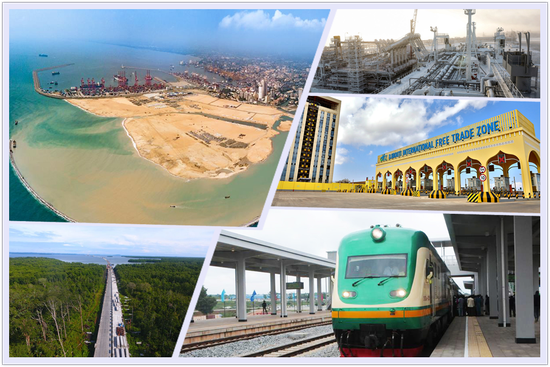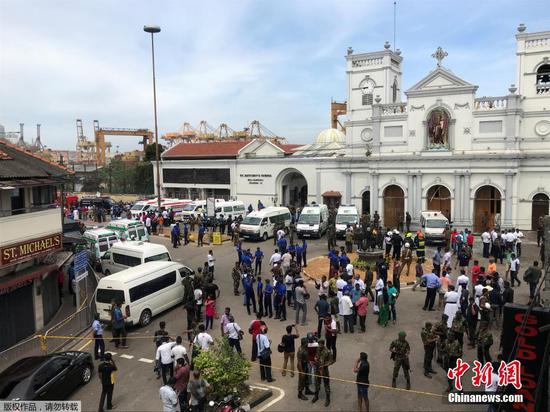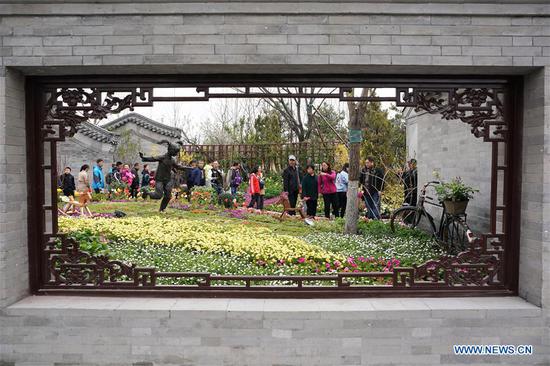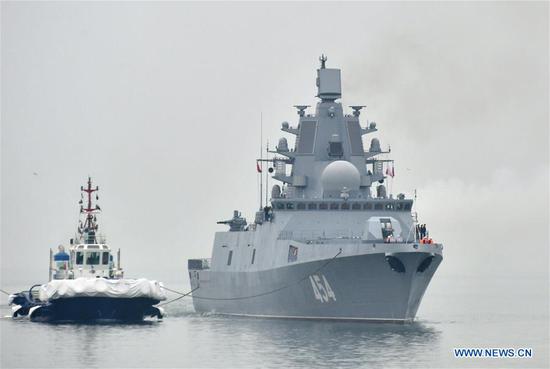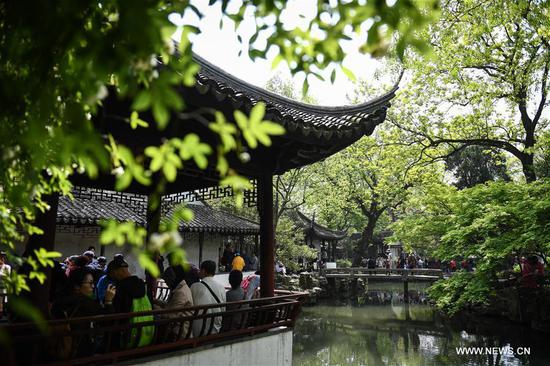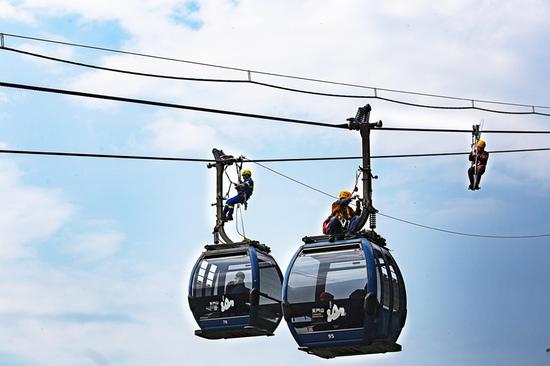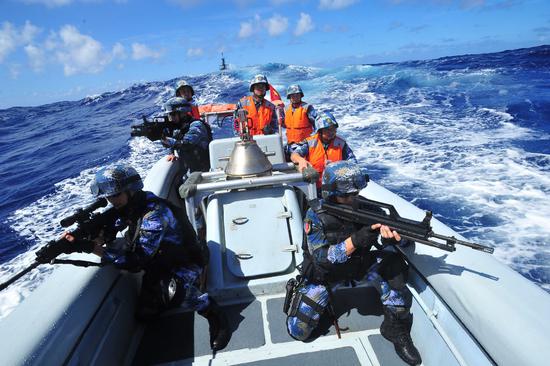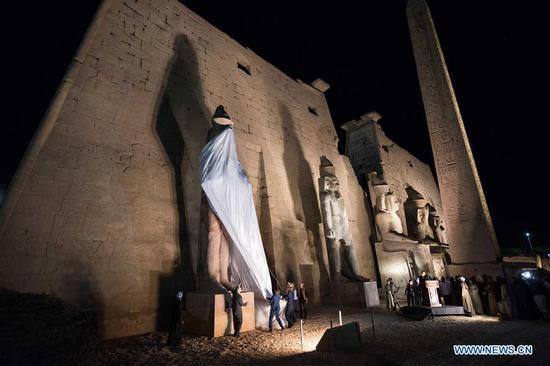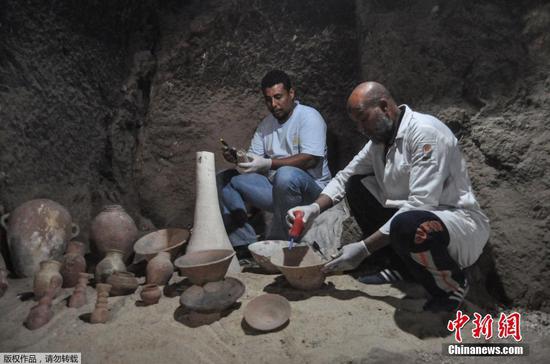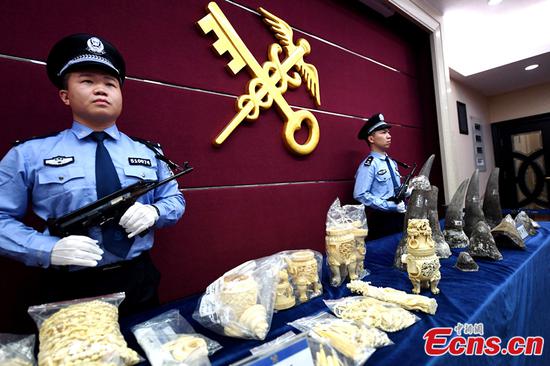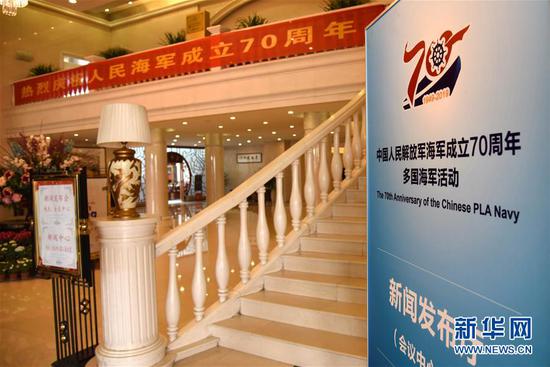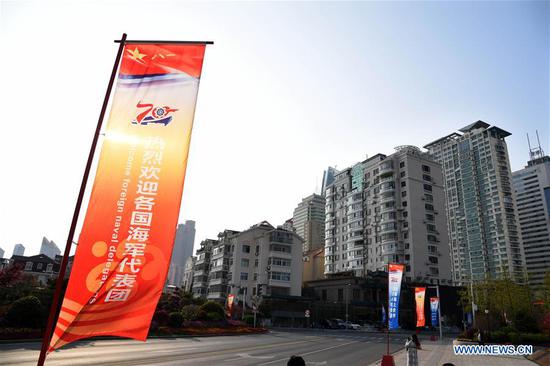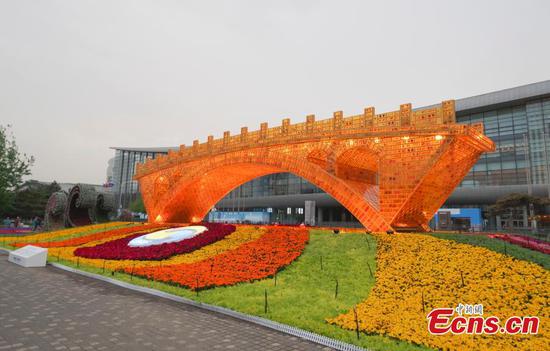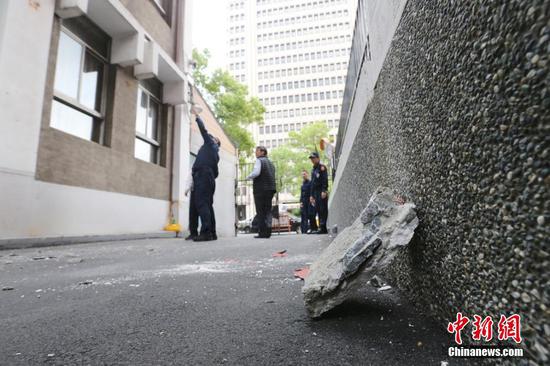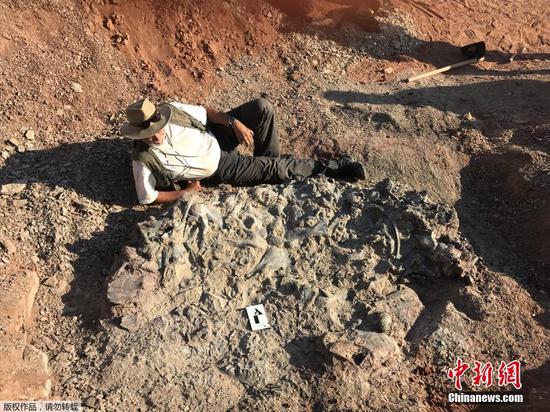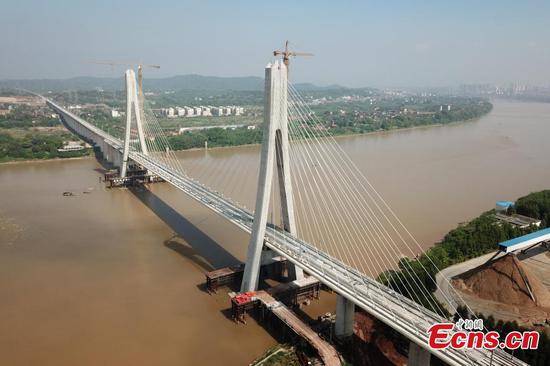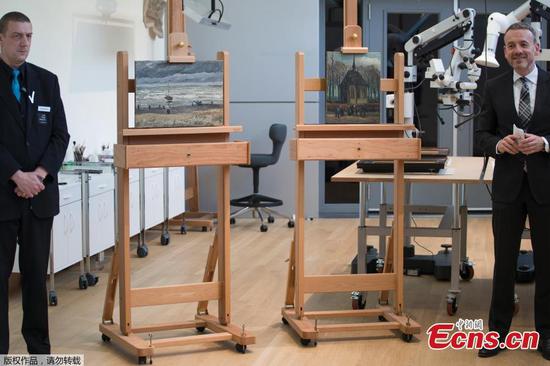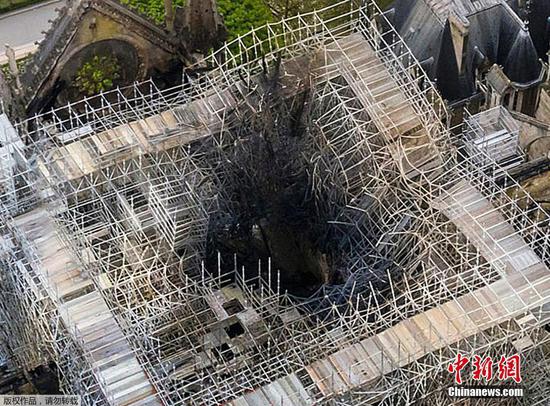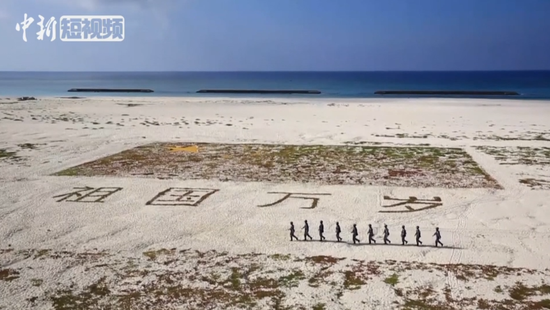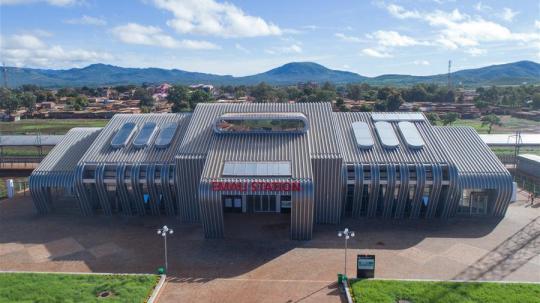
Photo taken on May 10, 2017 shows the Emali station on Kenya's Mombasa-Nairobi Standard Gauge Railway (SGR), which was built by the China Road and Bridge Corporation. /Xinhua Photo
The upcoming Second Belt and Road Forum for International Cooperation (BRF) in Beijing will be attended by some 5,000 participants from more than 150 countries and 90 international organizations, including heads of state and government from 37 countries, the secretary-general of the United Nations and the managing director of the International Monetary Fund, Chinese State Councilor and Foreign Minister Wang Yi announced on Friday.
The numbers show a significant growth in the popularity of the Belt and Road Initiative (BRI), compared with the first BRFtwo years ago. The number of participants in the first BRF was about 1,500, including heads of state and government from 29 countries.
Proposed by Chinese President Xi Jinping in 2013, the BRI comprises the Silk Road Economic Belt and the 21st Century Maritime Silk Road, and aims to build trade and infrastructure networks connecting Asia with Europe and Africa along and beyond the ancient Silk Road routes.

Chinese President Xi Jinping, foreign delegation heads and guests pose for a group photo at the Leaders' Roundtable Summit of the first BRF in Beijing, May 15, 2017. /Xinhua Photo
126 countries on board in over five years
Another indicator of the BRI's popularity is the number of countries that have signed inter-governmental cooperation documents with China. With Jamaica getting on board earlier this month, China has signed a total of 174 BRI cooperation documents with 126 countries and 29 international organizations.
It took five and a half years for that number to grow from zero to 126 – a remarkable achievement for a brand new cooperation initiative. By the end of 2014, China had signed BRI cooperation documents with nine countries. The number increased to 27 by the end of 2015.
Before the first BRF in May 2017, the number was 36, and 11 more countries inked BRI cooperation documents during the forum, including Mongolia, Pakistan, Nepal, Croatia, Montenegro, Bosnia and Herzegovina, Albania, Timor-Leste, Singapore, Myanmar and Malaysia.
Last year saw the biggest surge in worldwide enthusiasm in BRI cooperation, with 66 countries officially coming on board. The momentum has continued this year: Italy became the first G7 nationto sign a memorandum of understanding (MoU) with China on BRI cooperation in March.

Guided by the principle of consultation and cooperation for shared benefits, the BRI "champions mutual respect, consultation on an equal footing, openness and inclusiveness, and mutual benefit," Yang Jiechi, member of the Political Bureau of the Central Committee of the Communist Party of China and director of the Office of the Central Commission for Foreign Affairs, said in a recent interview.
"The BRI has proved a popular and worthy cause that goes along with the trend of our times," he said, noting that the China-proposed initiative has opened a new area for international cooperation in the context of rising protectionism and unilateralism.
It embodies China's commitment to "sharing development opportunities and outcomes with more countries in the world," he added.
The second BRF will give another boost to the BRI's popularity. Among the 37 countries that will be represented by heads of state or government at the forum, only Cyprus and Switzerland have not signed BRI cooperation documents with China. Will they do so in Beijing?

China's COSCO Shipping Taurus docks at Piraeus port, Greece, February 26, 2018. /Xinhua Photo
From Asia to every inhabited continent
Like the land-based and maritime Silk Roads in ancient times, the BRI originated in Asia and then began to extend to other parts of the world.
In September and October 2013, President Xi raised the concepts of the Silk Road Economic Belt and the 21st Century Maritime Silk Road during tours in Kazakhstan and Indonesia respectively.
Seven of the nine countries signing BRI cooperation documents with China in the following year were located in Asia, namely Kuwait, Sri Lanka, Qatar, Kazakhstan, Kyrgyzstan, Maldives and Afghanistan.
But Asia is not the continent with the largest number of BRI partners. With 36 countries signing BRI cooperation documents with China, Asia has been outnumbered by Africa, where the number has risen to 37 thanks to the 2018 Beijing Summit of the Forum on China-Africa Cooperation (FOCAC). Last year, 34 African countries endorsed the initiative, among which 28 inked the MoUs during the FOCAC summit.

As part of Eurasia, Europe has been playing an active role in BRI cooperation from the beginning. Two Eastern European countries, Belarus and Moldova, signed BRI cooperation documents with China in 2014. By November 2017, all the 16 Central and Eastern European countries (CEEC) taking part in the China-CEEC cooperation mechanism had officially joined BRI cooperation.
Meanwhile, other parts of Europe are also getting on board, with countries such as Austria, Portugal, Italy and Luxemburg signing BRI cooperation documents. Notably, Italy was the first major developed country to endorse the initiative.
As networks of BRI cooperation expand globally, a number of countries in Oceania, South America and North America have also become China's partners in co-building the Belt and Road, including New Zealand, Papua New Guinea, Chile, Uruguay, Panama, Cuba, etc.

Photo taken on June 2, 2018 shows a China Railway (CR) Express cargo train leaving for the Belarusian capital of Minsk from Shijiazhuang, north China's Hebei Province. /Xinhua Photo
While the number of BRI partners continues to grow, countries involved are shifting their focus from quantity to quality in cooperation under the initiative. According to Foreign Minister Wang Yi, the second BRF is intended to promote the high-quality development of Belt and Road cooperation.
"I believe that the forum will inject stronger impetus into the world economy, open even broader horizon for the development of the countries, and contribute to the building of a community with a shared future for humanity," Wang noted at a press briefing.









